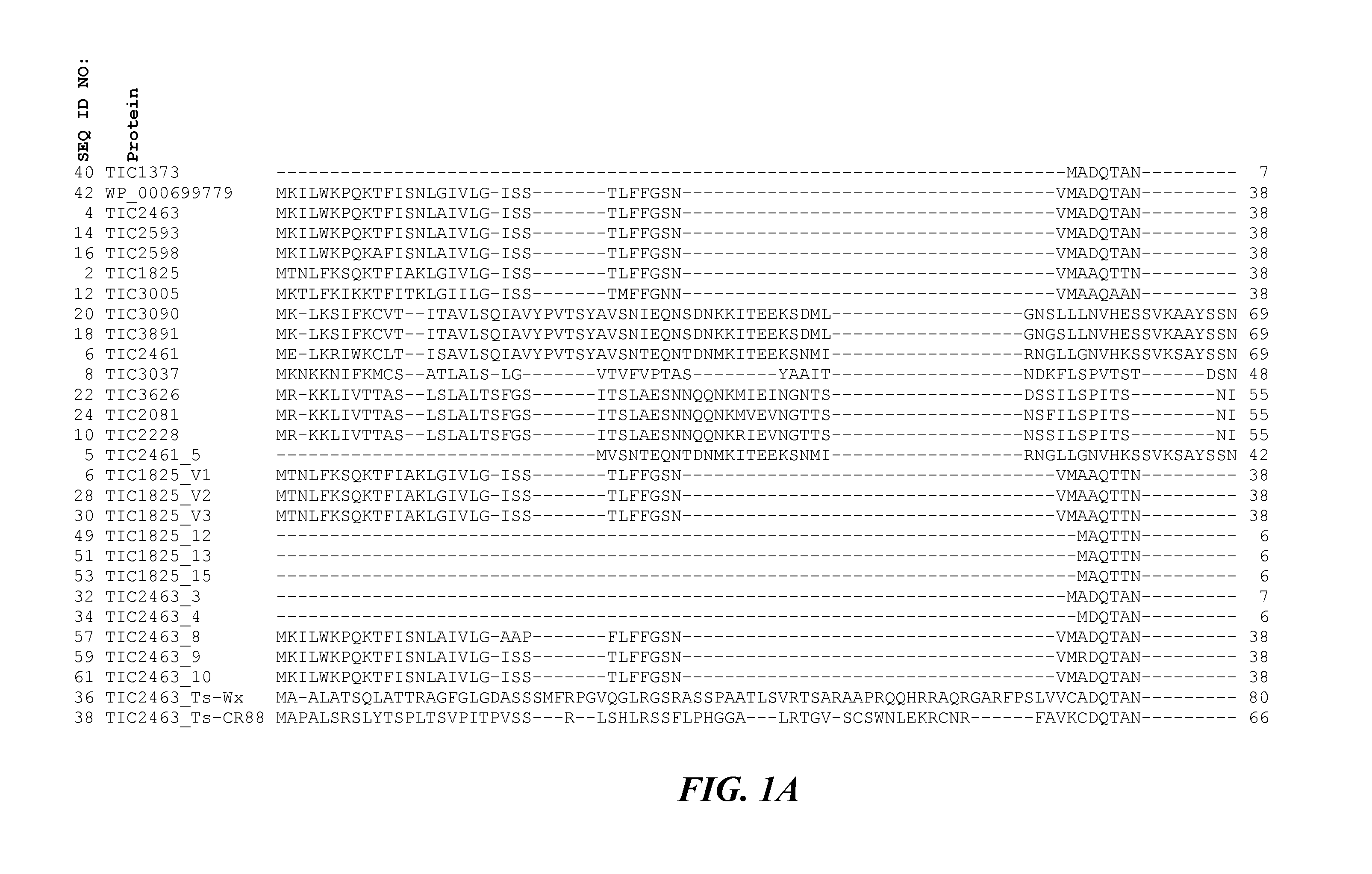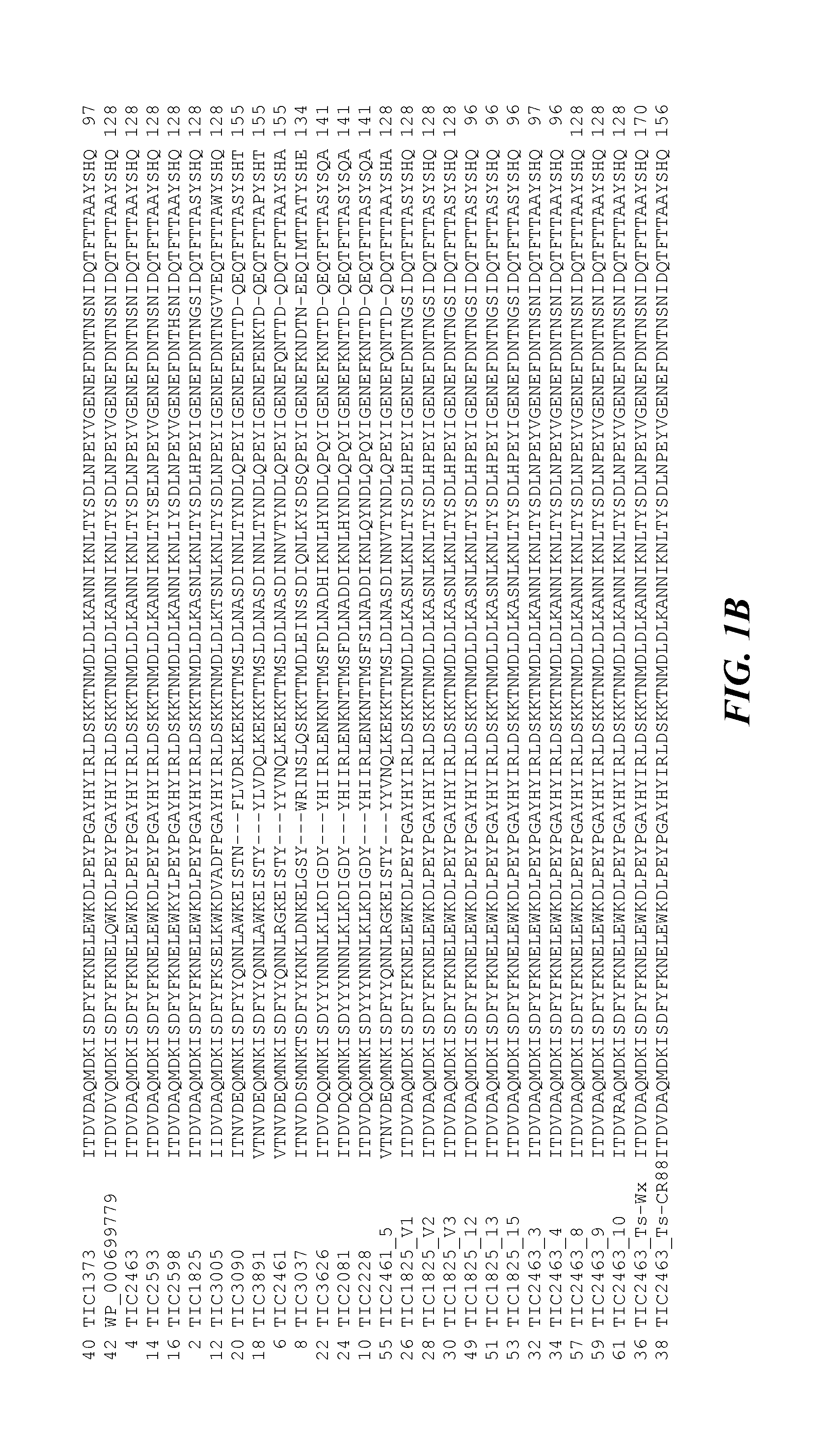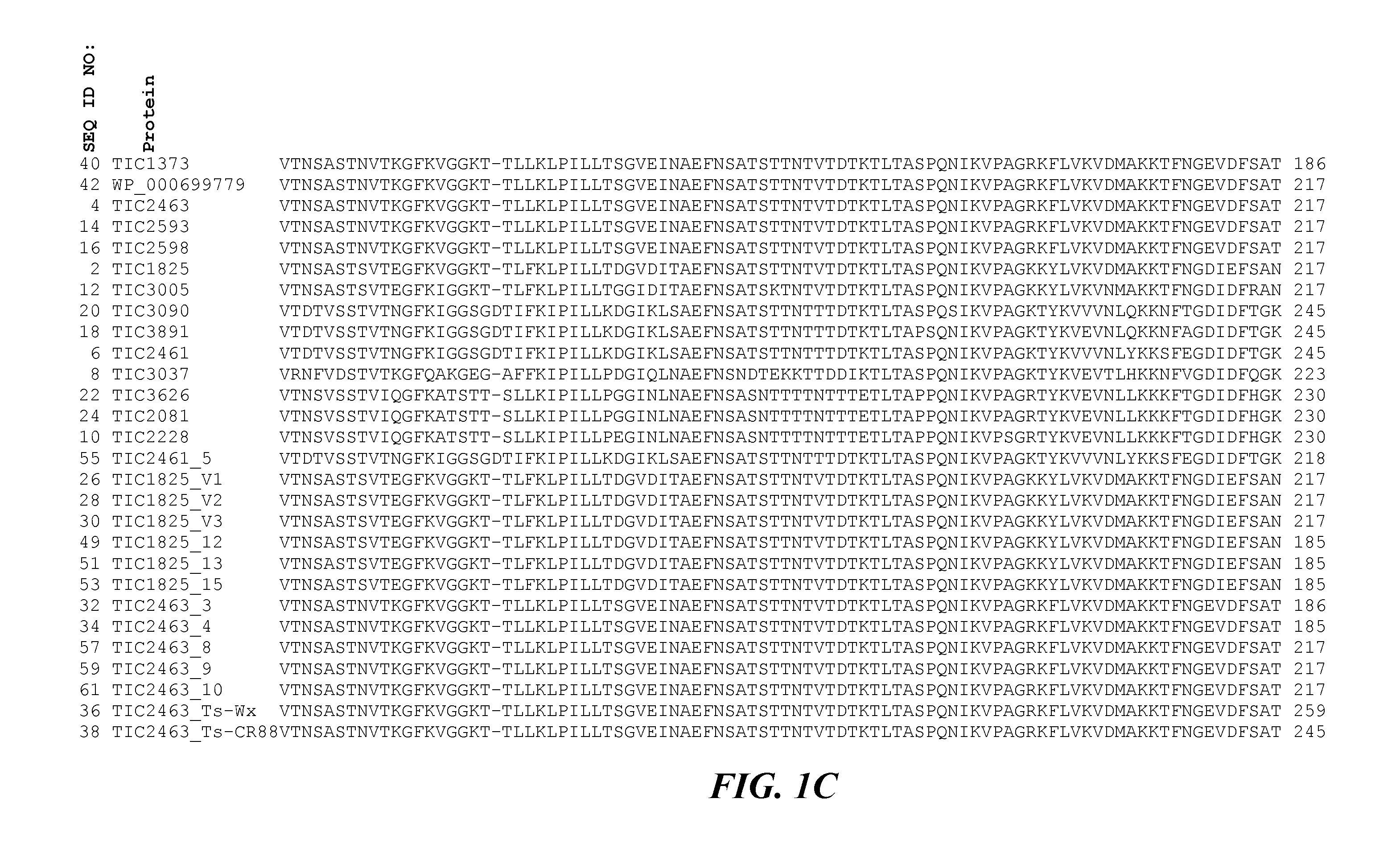Pesticidal Toxin Proteins Active Against Coleopteran Insects
a toxin and insect technology, applied in the field of insect inhibitory toxin proteins, can solve the problems of not being recognized to be commercially useful, not providing the low dose toxic effect of additional proteins, and increasing resistance development, so as to achieve the effect of increasing the yield of crops
- Summary
- Abstract
- Description
- Claims
- Application Information
AI Technical Summary
Benefits of technology
Problems solved by technology
Method used
Image
Examples
example 1
Discovery, Cloning, and Expression of TIC2463-Related Pesticidal Proteins
[0153]Bacillus thuringiensis (“Bt”) strains exhibiting distinctive attributes, particularly pesticidal activity, were identified and genomic libraries were constructed for each strain. Genomic libraries of such bacterial strains were created in vectors from which clones were identified that contain open reading frames (“ORFs”) encoding amino acid sequences that were hypothesized to exhibit pesticidal activity.
[0154]A Bt strain, EG3957, was found to exhibit Coleopteran insecticidal activity. A library constructed from the genome of this strain resulted in the identification of a clone that appeared to contain an ORF encoding a novel Bt protein, TIC1373 (SEQ ID:40). The TIC1373 amino acid sequence appeared to exhibit a distant relationship (less than 29% amino acid sequence identity) to a known Bt insecticidal toxin referred to as Cry60. Cry60 proteins contain peptide elements that are characteristic of Clostridi...
example 2
TIC2463-Related Proteins Exhibit Coleopteran Activity in Insect Bioassay
[0160]The TIC2463-related pesticidal proteins were expressed in Bt and assayed for toxicity to various species of Coleoptera. Preparations of each toxin from Bt were assayed against the Coleoptera species Leptinotarsa decemlineata (Colorado potato beetle, CPB), Diabrotica virgifera virgifera (Western Corn Rootworm, WCR), and Diabrotica undecimpunctata howardii (Southern Corn Rootworm, SCR).
[0161]Proteins discovered as described in Example 1 were produced from recombinant acrystalliferous Bt strains transformed with a vector encoding the respective TIC2463-related protein. Proteins were extracted from the recombinant bacterial fermentations and used in diet bioassays.
[0162]Protein samples for the diet bioassays were provided either as spore crystal protein suspensions or as soluble protein in spent bacterial growth media. Crystal spore protein suspensions of proteins were prepared in a buffer of Tris-HCl (10 mM, ...
example 3
TIC1825 Amino Acid Sequence Variants
[0168]This example illustrates that certain TIC1825 amino acid sequence variants exhibit improved pesticidal activity against corn rootworms in bioassay compared to native TIC1825 protein.
[0169]Alignment of the amino acid segments corresponding to the toxic portion of each of the TIC2463-related toxin protein family members shows amino acid sequence differences among the family members. Taking the alignment data as set forth in FIG. 1 together with the toxic profile data as set forth in Table 4 above, it was observed that TIC2463-related proteins that contain an alanine at the position corresponding to amino acid sequence position 233 as set forth in SEQ ID NO:4 for TIC2463 exhibit toxicity when tested against both CPB and corn rootworms. This suggested that proteins such as TIC1825, exhibiting toxic activity to CPB but not against CRW, may exhibit a broader host range and perhaps a greater toxic effect if the amino acids at or near the amino acid...
PUM
| Property | Measurement | Unit |
|---|---|---|
| temperature | aaaaa | aaaaa |
| temperature | aaaaa | aaaaa |
| concentrations | aaaaa | aaaaa |
Abstract
Description
Claims
Application Information
 Login to View More
Login to View More - R&D
- Intellectual Property
- Life Sciences
- Materials
- Tech Scout
- Unparalleled Data Quality
- Higher Quality Content
- 60% Fewer Hallucinations
Browse by: Latest US Patents, China's latest patents, Technical Efficacy Thesaurus, Application Domain, Technology Topic, Popular Technical Reports.
© 2025 PatSnap. All rights reserved.Legal|Privacy policy|Modern Slavery Act Transparency Statement|Sitemap|About US| Contact US: help@patsnap.com



